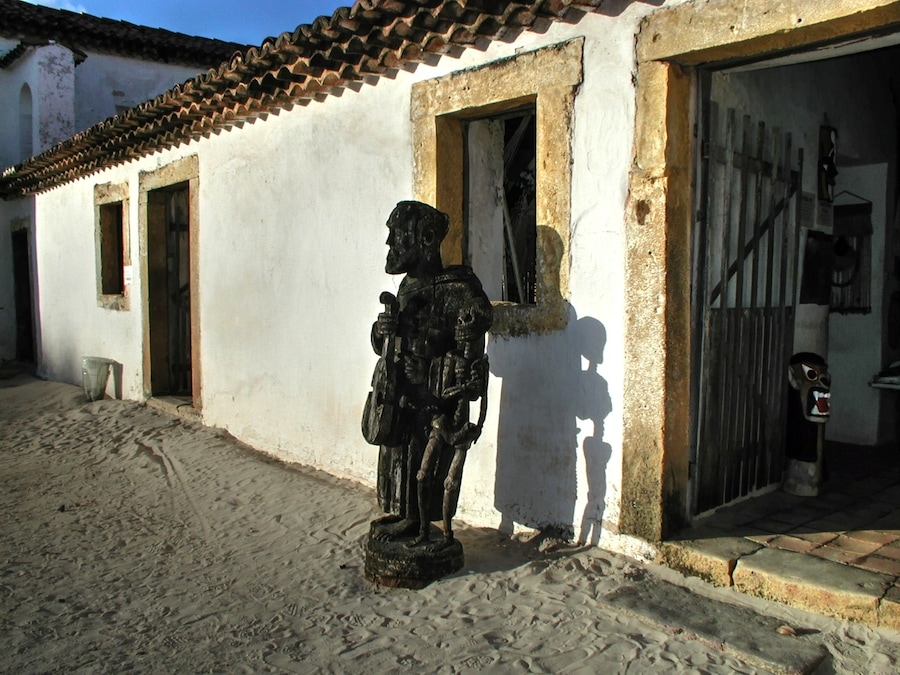Photo by Sérgio Veludo
Find 4 Star Hotels in Ilha de Itamaraca from SAR 119
- Plan, book, stay with confidence
Be picky
Search almost a million properties worldwide
Change your mind
Book hotels with free cancellation
Check availability on Ilha de Itamaraca 4 Star Hotels
Tonight
Tomorrow
Next weekend
In two weeks
Compare Ilha de Itamaraca 4 Star Hotels with updated room rates, reviews, and availability. Most hotels are fully refundable.

Novotel Recife Marina
Novotel Recife Marina
9.4 out of 10, Exceptional, (294)
The price is SAR 396
SAR 404 total
includes taxes & fees
8 Jun - 9 Jun

PRAIA DE MARIA FARINHA - PERNAMBUCO
PRAIA DE MARIA FARINHA - PERNAMBUCO
8.8 out of 10, Excellent, (5)

Pousada em Casa Forte
Pousada em Casa Forte
10.0 out of 10, Exceptional, (2)
The price is SAR 119
SAR 139 total
includes taxes & fees
13 May - 14 May
Save an average of 15% on thousands of hotels when you're signed in
Learn more about Ilha de Itamaraca
Trip time! Discover the windsurfing, beaches, and university life in Ilha de Itamaraca.

Photo by Sérgio Veludo
Open Photo by Sérgio Veludo
Recent reviews of Ilha de Itamaraca hotels
Recent reviews of Ilha de Itamaraca hotels

Novotel Recife Marina
5/5 Excellent
Convenient & good
"Close to old town which is where the action Is around Carnival. Nothing much around it but better that further south. It’s right at Marina if you are a boater. "
A verified traveler stayed at Novotel Recife Marina
Posted 2 months ago
Explore a world of travel with Expedia
Explore a world of travel with Expedia
Ilha de Itamaraca Hotels by Star Rating
Hotels in Ilha de Itamaraca Neighborhoods
Stay near popular Ilha de Itamaraca attractions
- Hotels near Itamaraca Beach
- Hotels near Fort Orange
- Hotels near Pontal da Ilha Beach
- Hotels near Pontal do Jaguaribe Beach
- Hotels near USA Consulate
- Hotels near Pernambuco Convention Center
- Hotels near Veneza Water Park
- Hotels near Mirabilandia Amusement Park
- Hotels near Memorial Arcoverde Park
- Hotels near Universidade Federal de Pernambuco
- Hotels near Mangue Seco Beach
- Hotels near Praça Rio Branco
- Hotels near Duque De Caxias Square
- Hotels near Praca de Casa Forte
- Hotels near Recife Harbor
- Hotels near Classic Hall
- Hotels near Shopping Tacaruna
- Hotels near Coroa do Avioa Beach
- Hotels near Pau Amarelo Beach
- Hotels near Maria Farinha Beach
More Hotel Options in Ilha de Itamaraca
- Beach Hotels in Ilha de Itamaraca
- Business Hotels in Ilha de Itamaraca
- Family Hotels in Ilha de Itamaraca
- Historic Hotels in Ilha de Itamaraca
- Hotel with a Concierge in Ilha de Itamaraca
- Hotels with Bars in Ilha de Itamaraca
- Hotels with Free Parking in Ilha de Itamaraca
- Hotels with WiFi in Ilha de Itamaraca
- Hotels with a Pool in Ilha de Itamaraca
- Pet-friendly Hotels in Ilha de Itamaraca
- Shopping Hotels in Ilha de Itamaraca
More Accommodation Types in
Explore more hotels
- NovoHotell Recife
- Villa Park Hotel Recife
- Condomínio TOLIVE One Housi by Carpediem
- Hotel Costeiro
- Hotel Abba Goiana
- Hotel Central Recife
- Pousada sol e luar
- Roomo Parque do Cais Recife Residencial
- Hotel Pousada São Francisco
- Pousada Alameda Boa Vista
- Pousada do Amparo
- Pousada Alameda Boa Vista
- NEW CASABLANCA PRAIA HOTEL LTDA
- Hotel 5 Sóis
- Max Derby Boulevard by Carpediem
- Reef Hostel & Pousada
- Hotel 7 Colinas
- Hotel Samburá
- Taverna do Paraíso
- Pousada dos Quatro Cantos









